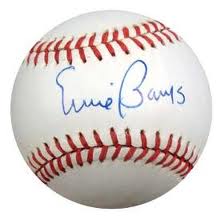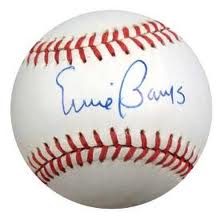In the last few months, I’ve been on a business development kick by sitting down with non-profit leaders and developing proposals for their consideration based on those conversation. After sending out the proposal, which they requested and helped frame, my recent experience is . . . nothing happens. And I do mean nothing. No follow-up phone call. No email. Not even a “thanks but no thanks form letter.” And when I initiate the follow-up, I sometimes don’t even get a response to that communication. Really?!? I am wearing deodorant (even cologne, usually). Ugh!
As I sit and contemplate this weird little trend in my professional life, I got thinking about the bigger picture and last five years of my life.
- The last time I sent an organization my resume for a job vacancy (more than five years ago), I never received a letter acknowledging receipt of my application or a rejection letter
- I’ve sent countless emails to non-profit organizations over the last five years asking if I could buy the CEO a cup of coffee or meal in an effort to “get to know them and their organization a little better as well as introduce myself,” and many times my email and phone calls would go unreturned
- We’ve even made charitable contributions in the last few years and either didn’t receive a gift acknowledgement letter or it arrived oddly late
All of this chin stroking and head scratching inspired me to dust off my copy of Penelope Burk’s Donor Centered Fundraising book to look for data on how often this type of stuff happens in the non-profit sector. This is some of what I found on page 38:
- 38% of donors say they always receive a thank you letter after making a charitable gift
- 41% report receiving something most of the time
- 19% receive an acknowledgement sometimes
Burk goes on to mention on page 46:
“Prompt gift acknowledgement influences 44% of study donors’ future giving decisions. 38% of study donors receive a thank you letter within two weeks; 54% within a month; 8% within two months.“
As I think back to that year-end charitable gift we made to an area organization for the first time, I’m remembering: a) it was the first gift we ever made to that organization outside of an event ticket and b) it is the last time we gave them any money and haven’t participated in any of their events since. As I process this for the first time since it happened, I don’t think we’re mad about it. I suspect we just don’t care enough, especially if they don’t seem to care about it.
I am left with the following thoughts and questions:
- With so many organizations using donor databases today, isn’t it as simple as a key stroke to produce a gift acknowledgement letter?
- Is it too time consuming to put a customized note on each computer generated letter to help alleviate the impersonal nature of this type of response?
- For loyal donors or larger philanthropists, is another handwritten thank you note that difficult to produce?
If I had a nickle for every fundraising professional who asked me for “good samples” of gift acknowledgement and thank you letters, I would be a wealthy man. If you are one of those people who is stuck and needs a little advice, then spend a little time with the following data that Burk shares on page 37:
“What donors feel makes a thank you letter superior: personalized in some way 51%; acknowledges how the gift will be used 30%; handwritten 16%; signed by a member of the board 13%“
I highly recommend purchasing one of Penelope Burk’s books. For people who subscribe to and read this blog, you know I’ve been a fan for a long time.
In addition to the amazing Penelope Burk, I also suggest looking at:
- Miss Manners’ Guide to Excruciatingly Correct Behavior
- Miss Manners’ Basic Training: Communication
- Miss Manners Minds Your Business
And for those of you who are looking for samples and templates of well written acknowledgement and thank you letters, Miss Manners also has some wise advice for you that was published on July 24, 2012 in the Washington Post. Click here to read what she has to say. Enjoy! 😉
What is your organization’s policy on gift acknowledgement and thank you letters? Where is that policy written (e.g. gift acceptance policy? resource development plan’s section on RD policies?) What consideration went into developing your policy (e.g. size of fundraising staff? technology? donor retention goal?) Please use the comment box to share your thought and experiences. We can all learn from each other.
Here’s to your health!
Erik Anderson
Founder & President, The Healthy Non-Profit LLC
www.thehealthynonprofit.com
erik@thehealthynonprofit.com
http://twitter.com/#!/eanderson847
http://www.facebook.com/eanderson847
http://www.linkedin.com/in/erikanderson847






